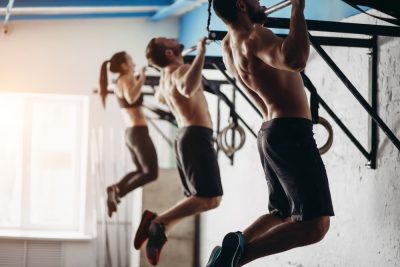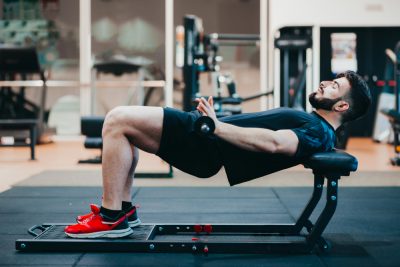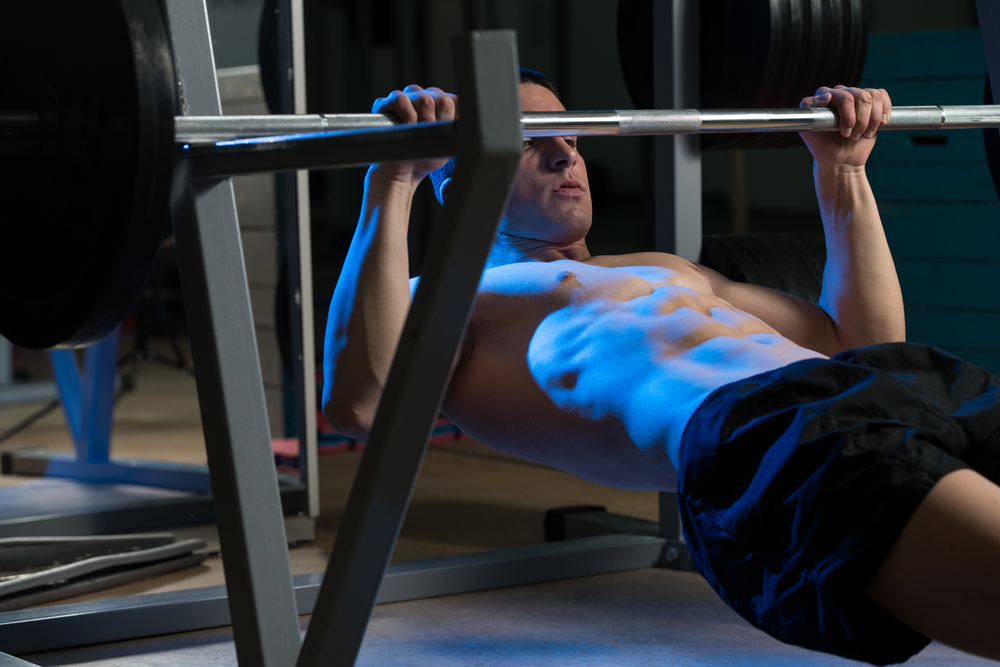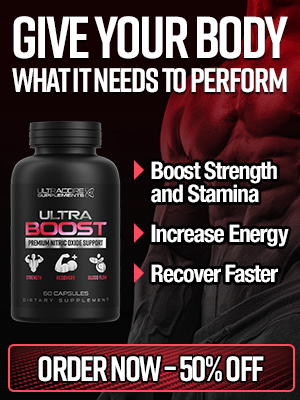The inverted row is a very easy and efficient exercise that is great for your pull muscles. It is an exercise that should be incorporated into your exercise program if you are already ding pull or you are looking to get your first pull. It can be seen as a stepping stone to aid people in getting their first pull-up. When you can perform the inverted row correctly, you will build muscle and strength in your grip, core, forearms, biceps, and back.
The regular barbell row is where you lift the barbell while bending over at your waist and maintaining a straight back, then pulling the weight upwards to your chest. It is certainly a good exercise, but there could be serious complications if you perform it with improper form.
Fortunately, you do not have to worry about all of that with the inverted row. When performing this exercise, only your bodyweight and a bar to lean back from are required. Unlike the regular barbell row, there is no additional stress on your back. You will also get a great core workout as a bonus.
Benefits of the inverted row
Little equipment and preparation needed
To perform the inverted row, you do not need to make a great deal of preparation or have a lot of space or equipment, which is why it is a fantastic exercise to add to your workout. Because you can execute this movement anywhere, it gives you the opportunity to open different doors to fitness all through the stages of your life. You can do the inverted rows to gain maximum benefits, whether you are training out of your garage, traveling, or in a place where a lot of people are crammed in.
Midline stabilization and body awareness
Bodyweight movements like the handstands, inverted rows, and plank all demand core stability and a sense of body awareness to execute the motion in addition to keeping yourself in the correct position. A very important factor for increasing posture, strength, and performance in almost every lift is midline stability. Performing inverted rows is an ideal way to improve lower back strength and core stability in the beginning and ending positions. While executing the rowing motion of this exercise, it also provides you with the same core benefits.
Muscular, back, arm, and grip strength development
The inverted row targets and increases your overall arm, grip, and back strength and performance, just as it is with other pulling and rowing variations. You being able to move your body weight is an added benefit that comes with performing the inverted row. While it can be quite challenging, it rewards you by ensuring you demonstrate muscular control and coordination all through the full range of motion. Gymnastics based moves like the suspension training are effective when it comes to producing increased period under tension on your muscle, which is an effective way to grow your muscle.
Highly scalable movement
The inverted row has become a very popular move that is found in exercise circuits that feature pull-ups in addition to varying gymnastic movements. Because of its angle of pull and progression that is widely adjustable, you can use the inverted row in group settings and also in training areas where the exercisers are having difficulties doing higher-rep based bars and some right gymnastic movements.
Thanks to the scalability of this move and the ease of use, and transferability of strength and skill to more complex movements, which makes the exercise an ideal option for people that are lacking when it complex movements.
How to perform the inverted row
These are the steps to perform the inverted row to make sure that you reap the maximum benefits while avoiding any injury due to form problems;
- Start by setting the bar to a level that aligns with your waist. If you want the movement to be more challenging, you can lower the bar more.
- Lie face up as you position yourself beneath the bar. Lie down with your back on the ground beneath the bar.
- Use an overhand grip to hold the bar, ensuring your hands are wider a bit than shoulder-width apart and your palms are facing away from you.
- Keeping our body in a straight line, contract your butt and abs. Imagine you are doing a plank and ensure that your feet, hips, legs, shoulders, and ears are in a straight line.
- Then, starting pulling yourself upward to the bar and stop when your chest makes contact with the bar.
- While maintaining proper form, use a slow and controlled motion to lower yourself back down.
If you feel that the move is too difficult for you, you can just track back a few steps and set the bar at a higher starting point. This would ensure that your body isn’t as close to the floor as before.
Tips to master the inverted row
- Play with grip position
It is recommended that you take the inverted row as a fun exercise. The inverted row comes with a lot of applications, and it can be performed by anyone and at any place. Aim to learn the traditional standard double overhand grip, apart from by shoulder width. You can also try other grips too, such as the narrow grips, wide grips, underhand grips, and mixed grips. Your forearm strength will be honed; you will have added shoulder mobility. You will also alter your mid-back demands and overall core demands of your body.
- Go as high as possible
Do not opt for the traditional aim of bar touching body. It is not everybody that would be able to get their torso up to the bar. For you to touch your chest, it involves your back strength as much as it involves your shoulder mobility and chest flexibility. It is advisable that you do not push past your range as you could increase the chances of the head of the humerus gliding forward to see the completion of the movement, instead of having your muscles do the work. What you should try to do is go as high as you comfortably can and then maintain the position for a moment before squeezing your back muscles.
- Pull the bar to your chest

Your major aim is to touch the bar to your lower chest as you start to row upwards. You are meant to pull the bar to your chest and not pull your chest to the bar. You would be able to easily maintain that board-position if you actively carry out that instruction. The primary aim of the inverted row is still to make your chest connect with the bar, and you will take the emphasis off your back. You will also find that you are putting in a lot to get to the bar. At this point, you start cheating and arching your back towards the bar.
- Squeeze your shoulder blades
Ensure that you squeeze your blades before you start rowing up. Doing this would create enough room for your rotator cuff tendons to work and also pull your shoulder joints into the sockets again. When you do this, your pushups form is honed as the inverted row is basically a pushup that you perform upside down.
- Squeeze your glutes

The inverted row is not only an exercise that works your back, but it also targets the entire body and is an ideal way. During the row position, you have to focus on working your mid-back and lats. Tension also needs to be created throughout the rest of the power bank. When you are all set up, you should form a straight line from the torso through the feet, and it needs that you put in extra work to ensure that your entire midsection is in the correct position. Keep your core, glutes, and abs tight throughout the whole move.
- From the beginning of the movement to the end, ensure you pull your shoulder blades down and back towards themselves. Imagine you want to pinch a pen between your shoulder blades to ensure you don’t shrug your shoulders.
- Ensure you tighten your abs all through the movement. The only part of your body that should move is your arms, while the rest of your body should be in a straight line.
- Pull yourself up until your chest makes contact with the bar and then lower yourself until you have fully extended your arms.
Why the inverted row is so great
There are many reasons as to why the inverted row is regarded as a great exercise. A major reason is that it works all your pull muscles, which include;
- Your grip
- Your forearms
- Your biceps
- All your back muscles
- The stabilizer muscles that are responsible for making the above muscles work together.
If you are someone that likes performing bench presses, you need to start working your pull muscles in an equal amount of way to create a balance and also to avoid injury. Also, if you have the need to be able to do pull-ups, you would need to add the inverted row into your exercise program until you are able to execute a full pull-up.








COMMENTS